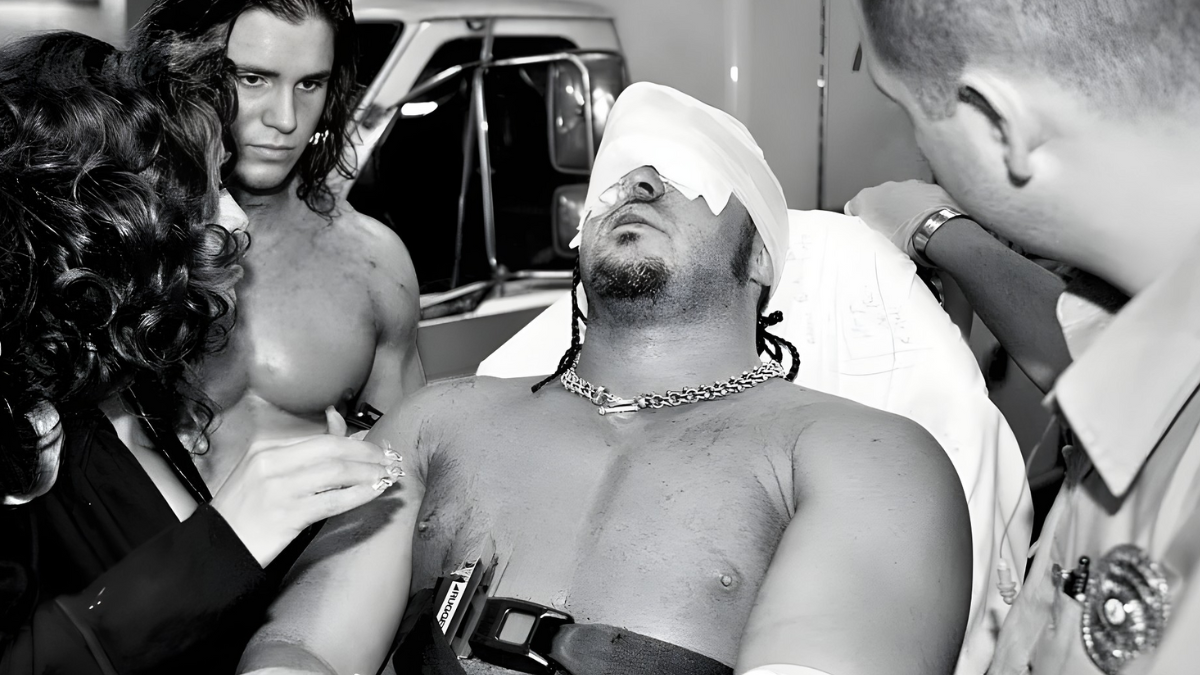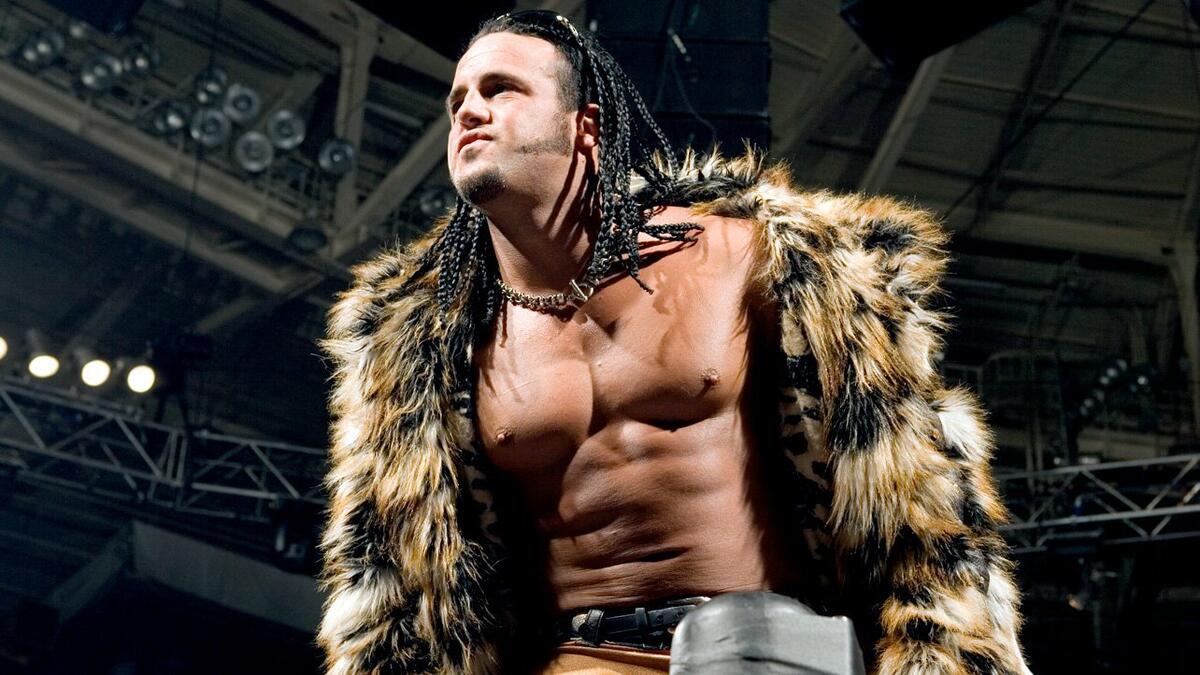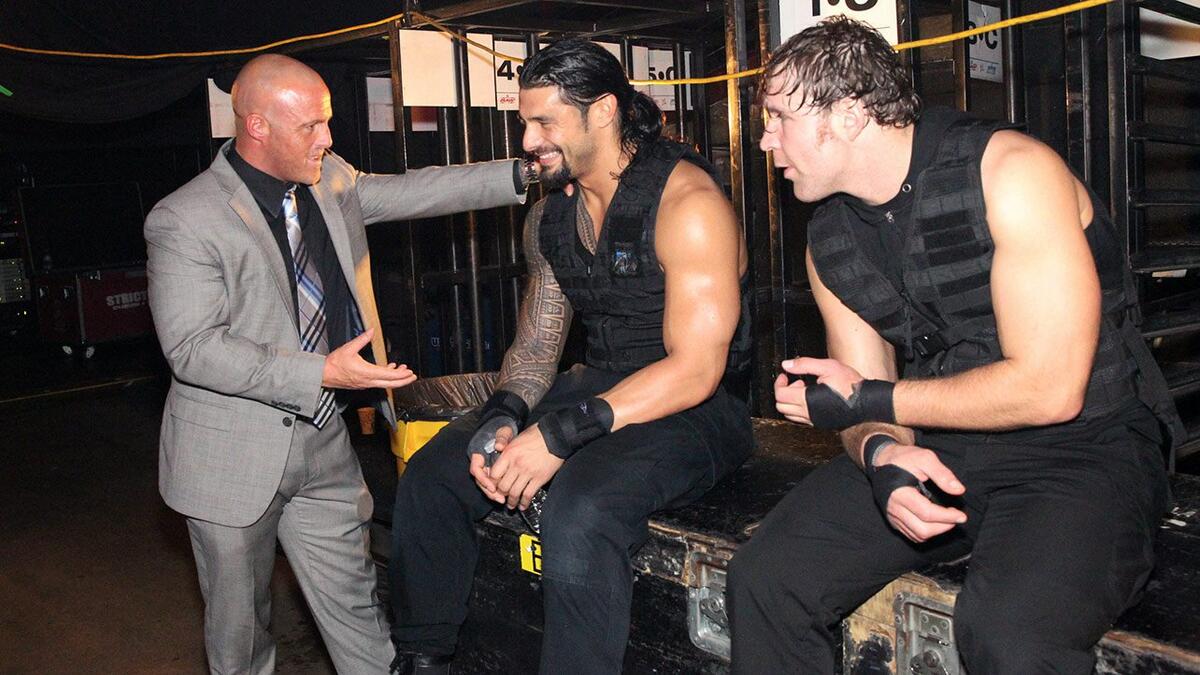Joey Mercury’s career was on the rise. Instead, December 17th, 2006 marked the beginning of a collision—literal and personal—that nearly ended everything. A ladder match accident in Armageddon’s main event would trigger a series of events that took Mercury to the edge of survival. Yet his story did not end in tragedy. Instead, it became one of redemption: from wrestling’s near-casualty to the unsung architect behind The Shield’s rise and one of wrestling’s most respected mentors.

Quick Tip for Facebook Readers
Many of our readers connect with our content through our Facebook page. However, Meta's built-in browser (which opens by default on mobile) occasionally freezes mid-article- a known issue unrelated to our site. To enjoy uninterrupted reading: Tap the three dots in the top right corner → Select 'Open in external browser.' This will resolve the glitch. Thanks for your support. We want your wrestling stories to stay as smooth as a top-rope hurricanrana!
MNM’s Championship Success and Joey Mercury’s Armageddon 2006 Ladder Match Career-Altering Injury

Joey Mercury was a promising young talent who debuted on SmackDown! in 2005 as part of the memorable heel team with Johnny Nitro and Melina, known as MNM (Mercury, Nitro, Melina).
MNM made an immediate impact, winning the WWE Tag Team Championships in their debut against Eddie Guerrero and Rey Mysterio. They were named Pro Wrestling Illustrated’s Tag Team of The Year on their debut year on SmackDown! and held the WWE Tag Team Championships a total of three times.
The MNM gimmick—self-entitled Hollywood performers who demanded theatrical entrances—worked effectively for the dynamic trio. However, the group was short-lived, with early 2007 marking the last time they competed together in WWE.
On December 17, 2006’s Armageddon pay-per-view, a Fatal 4-Way Ladder Match took place between MNM, Dave Taylor and William Regal, Paul London and Brian Kendrick, and The Hardy Boyz for the tag team championships.
Ladder matches present inherent danger and significant physical risk. During the match, The Hardyz and MNM encountered each other in a corner of the ring with ladders positioned nearby. Matt Hardy held both Nitro and Mercury’s heads down toward a ladder that would be projected upward when Jeff Hardy executed a leg drop, creating a see-saw effect.
The planned spot resulted in an unintended outcome. Johnny Nitro escaped with minimal injury. Joey Mercury sustained the full impact. The force of the collision required immediate medical attention, and Mercury was transported to the hospital while his tag team partner continued competing on his behalf.
Mercury subsequently provided detailed accounts of his injuries in a WWE.com interview:
“I sustained multiple facial fractures around the nose bridge area. The injuries included four fractures on the interior nasal structure, requiring five internal stitches on the nose and cheek region, and 15 external stitches on the nose and cheek area. My left eye was significantly swollen, and I experienced ongoing internal bleeding from both my nose and eye region.”
The impact’s force was sufficient to potentially render most individuals unconscious. Mercury revealed, however, that he retained consciousness throughout the incident:
“I remember everything. I never lost consciousness and I never passed out.”
Mercury described the physical sensation: “I have nothing to compare it to; I’ve never sustained that level of facial impact before. I would describe it as equivalent to a hundred-pound steel ladder connecting with my face at one-hundred miles per hour, or traveling headfirst through a vehicle windshield without restraints, or being struck in the face with a baseball bat swung by Sammy Sosa.”
Following the incident, Mercury maintained his professional commitment to the wrestling narrative:
Had I not been forced to leave the match due to medical concerns requiring treatment, MNM would be the WWE Tag Team Champions. We demonstrated that MNM is the greatest tag team in the modern era—not The Hardys.”
From Physical Recovery to Personal Crisis Leading to WWE Release
Joey Mercury returned to in-ring competition several weeks following the incident. While his physical injuries healed sufficiently to allow performance, his mental and emotional well-being deteriorated significantly. To manage pain from both his injuries and pre-existing challenges, Mercury relied on prescription pain management medications. He subsequently developed a dependency on these medications.
Mercury had struggled with substance use challenges since early in his life and had previously experienced difficulties maintaining sobriety. The introduction of prescription pain medications, combined with existing personal struggles, created a critical situation.
WWE released Mercury in March 2007—approximately three months after the ladder match injury. To external observers, this decision appeared potentially severe: “A performer sustains significant facial trauma and receives his release just ninety days later?”
However, the reality was more complex. This decision represented a necessary intervention that potentially prevented a more tragic outcome. Mercury had already spent significant time in treatment facilities during 2006 for substance use challenges, missing five to six months of active competition.
Mercury opened up about his struggles with Slam Wrestling:
“I entered treatment in 2006 and missed five to six months of work due to substance use challenges.”
Mercury admitted to not being completely truthful with WWE during this period and acknowledged that he returned to competition before being mentally and emotionally prepared:
“I was not being honest about my readiness because I wanted to resume performing so urgently.”
Following his recovery from the initial treatment, the Armageddon incident occurred. Mercury reflected on this sequence:
“I regret that the injury happened. Had it not occurred, perhaps I would have managed the situation differently regarding substance use.”
Mercury shared the extent of his long-term struggles: “I have dealt with dependency since I was 15 years old—right before I began my wrestling career. That represents approximately 15 years of ongoing challenges.”
Vince McMahon’s Intervention: The Decision That Saved Joey Mercury’s Life
Mercury’s reluctance to acknowledge his challenges publicly stemmed from several concerns: “I was uncomfortable disclosing my struggles. I was concerned that treatment had not been effective and didn’t want this to reflect poorly on my professional standing. At that time, I was performing on most WWE programming and was featured in significant storylines.
When WWE discovered Mercury had used unprescribed medications provided by another person, the company made the difficult decision to release him:
“Before a taping, I was offered medications by someone else—they were not prescribed to me. I understood this was inappropriate, but I used them anyway because of the nature of addiction.
The company subsequently removed him from active programming.
According to Mercury, Vince McMahon explained the reasoning behind the release decision:
“Vince communicated to me: ‘We are not concerned about your in-ring performance because we know you can deliver quality performance for the duration of a match. We are concerned that you are going to experience a fatal outcome.’
“WWE provided me with multiple opportunities to address my challenges, and I was the one who made poor decisions.”
Mercury acknowledged McMahon’s perspective was accurate: “I was at serious risk.”
Mercury reflected on his situation at the time of his release: “I was 28 years old. In retrospect, I am grateful for WWE’s decision, though at that time I opposed it. I wanted to continue my previous lifestyle.”
Mercury concluded his reflection with a stark acknowledgment: “I have experienced overdoses on three separate occasions and was involved in serious vehicle accidents on approximately ten occasions. I am grateful to still be alive.”
The Shield’s Hidden Weapon: Joey Mercury’s Mentorship of Seth Rollins, Dean Ambrose, Roman Reigns

Mercury’s story is one of serious personal struggle, yet it evolved into a narrative of recovery and professional contribution.
The three-time Tag Team Champion has overcome significant challenges, particularly those faced during his early wrestling years. Today, he is highly respected within the professional wrestling industry, recognized for his wrestling psychology expertise, and has served as a producer and trainer, sharing his knowledge with younger performers. He also contributes significantly to Ring of Honor’s creative team.
The respect Joey Mercury commands within the industry is evident in testimonials from performers who have worked with him. Dean Ambrose, Roman Reigns, and Seth Rollins of The Shield have publicly acknowledged Mercury’s mentorship and impact on their careers.
In 2014, WWE produced a “Where Are They Now?” retrospective about Mercury, coinciding with his eventual alignment with Seth Rollins as part of J&J Security. During this partnership, Mercury and Jamie Noble significantly contributed to Rollins’ first World Championship reign.
Seth Rollins provided detailed praise for Mercury’s contributions:
“He is recognized as a master of wrestling psychology and the technical aspects of in-ring performance. He is dedicated to teaching performers how to improve their execution and effectiveness. He functions as a talent maximizer—he identifies your strongest attributes and enhances them further. He identifies areas where performers struggle and facilitates meaningful improvement.”
Dean Ambrose similarly praised Mercury’s mentorship: “There will likely be multiple WWE Hall of Famers who identify Joey Mercury as their primary influence in their acceptance speeches.
Roman Reigns echoed this sentiment: “He functions as an unofficial fourth member of our group. When Joey provides guidance on how to execute something, it consistently improves our work. He maintains our professional standards through his expertise. He is definitely a mentor figure to all of us. At this point, when Joey demonstrates a method for executing something, I apply that approach first, because his guidance is correct approximately 99 percent of the time.”
With hundreds of amazing Pro Wrestling Stories to dive into, where do you start? Get the inside scoop – join our exclusive community of wrestling fans! Receive 10 hand-picked stories curated just for YOU, exclusive weekly content, and an instant welcome gift when you sign up today!
Wrestling Legacy: How Joey Mercury Became Wrestling’s Most Respected Unsung Hero and Talent Developer
Joey Mercury represents an unsung hero within professional wrestling. While his in-ring career did not achieve the longevity he desired or the impact he initially sought, his wrestling knowledge and mentorship have provided decades of value to the industry.
His journey—from career crisis to respected mentor and producer—demonstrates the possibility of recovery and redemption. The performers he has mentored, including some of wrestling’s most prominent contemporary stars, acknowledge his profound influence on their development and success.
Mercury’s legacy extends beyond his in-ring accomplishments. His contributions as a mentor, producer, and creative team member continue to shape professional wrestling, and his influence on The Shield members and other performers will likely be acknowledged by future generations within the industry.
These stories may also interest you:
- Triple H’s 4 Near-Fatal Injuries That Almost Ended It All
- John Morrison: His Up and Down First Run in WWE
- WrestleMania 24 Malfunction That Injured Dozens of WWE Fans
Can’t get enough pro wrestling history in your life? Sign up to unlock ten pro wrestling stories curated uniquely for YOU, plus subscriber-exclusive content. A special gift from us awaits after signing up!
Want More? Choose another story!
Be sure to follow us on Facebook, X/Twitter, Instagram, Threads, YouTube, TikTok, and Flipboard!
Pro Wrestling Stories is committed to accurate, unbiased wrestling content rigorously fact-checked and verified by our team of researchers and editors. Any inaccuracies are quickly corrected, with updates timestamped in the article's byline header.
Got a correction, tip, or story idea for Pro Wrestling Stories? Contact us! Learn about our editorial standards here. Ever wanted to learn more about the people behind Pro Wrestling Stories? Meet our team of authors!
ProWrestlingStories.com participates in affiliate marketing programs. This post may contain affiliate links, meaning we may earn commissions at no extra cost to our readers. This supports our mission to deliver free content for you to enjoy!

"Evan Ginzburg’s stories are a love letter to wrestling, filled with heart, humor, and history. A must-read for any true fan." — Keith Elliot Greenberg
Wrestling Rings, Blackboards, and Movie Sets is the latest book from Pro Wrestling Stories Senior Editor Evan Ginzburg. 100 unforgettable stories—from sharing a flight on 9/11 with a WWE Hall of Famer to untold moments in wrestling history. A page-turner for fans of the ring and beyond. Grab your copy today! For signed editions, click here.












